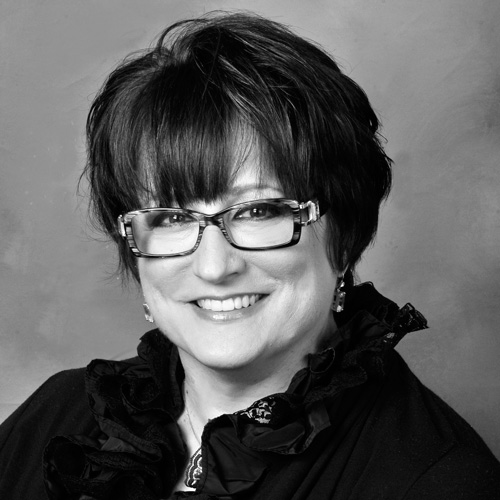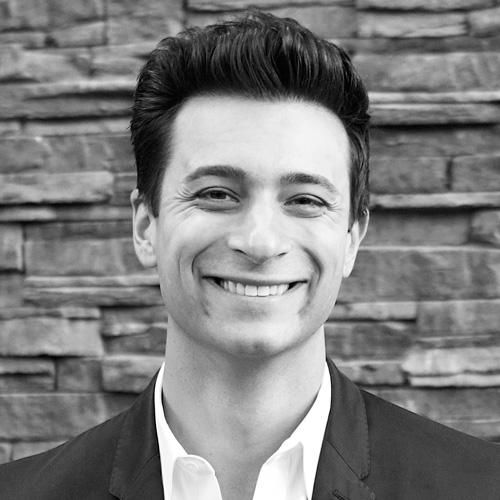After paying her way through college at California State–Fullerton, Orange County native Karon Evanoff launched into the world of advertising. She had dreams of working her way into fashion merchandising. But there was a small problem—she hated advertising. The clients she worked for were scattershot and incongruous: fast food providers and a couple of high-tech trade magazines. The bigger issue was the disillusionment she felt not having the ability to influence decision making and being at the mercy of her clients’ wishes. “It wasn’t quite as glamorous as you would imagine,” Evanoff says. “I realized I didn’t really want to be on the side that is told ‘no.’ I wanted to be on the side with the money and the power of negotiation.”

So, after returning from a soul-searching vacation to Australia in 1989, Evanoff started looking for work in an entirely different industry. She was hired to work in the supply chain group at Western Digital, a supplier of data storage products and services based in Irvine, California. She quickly rose to the position of senior commodity manager. Later, she held strategic sourcing and supply chain positions at Applied Micro Circuits Corporation, Powerwave Technologies, and SolFocus.
What did she learn from her varied professional experiences? “I think it gave me more confidence to know I could work at that level, to be able to stand in front of a group of executives and put my team in front of senior leadership,” Evanoff says. “I’m not by nature a patient person. I want to do everything now, and it’s frustrating when things take longer than expected. I want to save more money and to be so much faster.”
Today, Evanoff is vice president of global supply chain for HID Global, a secure identity solutions provider that works worldwide. She is responsible for overseeing direct and indirect spending of over $500 million globally, with oversight of more than fifty people spread across the Americas, Asia, and Europe. Nearly every facet of supply chain operations that affects products arriving to customers inexpensively and on time falls under her watch, from global procurement and strategic sourcing to master scheduling, as well as sales and operations planning.
A rapidly growing subsidiary of Swedish lock manufacturer Assa Abloy, HID Global boasts several notable successes. It acquired companies across the globe, including in 2014, Lumidigm—an Albuquerque-based firm that developed a fingerprint identification reader for secure banking. HID Global opened a 10,000-square-foot Global Design Center in Chennai, India, which became fully operational in quarter four of 2015. It also partnered with Cryogatt Systems to create a radio frequency identification (RFID) embedded tag to help deliver accurate and timely records of materials stored cryogenically. It has the patent on technology that will link multiple security products together on a single mobile phone or card, a seamless integration that has attracted the attention of a number of companies.
Still, the new line of innovative technology products is in the youth stage of its life cycle, Evanoff says, and the role of supply chain is critical to maintain the value of older technologies facing pressure from competition as patents expire. “This industry as a whole is young with respect to integrated supply chain dynamics. Some people think it’s about issuing a purchase order (PO) and forgetting about it,” Evanoff says. “But you have to realize who your customers are. You can’t just place POs and hope it works when you sell to large integrators of products who have global presence, have been around a long time, and are more developed in their supply chain strategies and integration. We’ve acquired so many companies in a relatively short time period, all with individual systems; we have to create an integrated supply chain so they can all act as one HID.”
“We’ve acquired so many companies in a relatively short time period, all with individual systems; we have to create an integrated supply chain so they can all act as one HID.”
The order fulfillment map Evanoff saw when she first came to HID Global was a map so crowded with crisscrossed lines that it was almost indecipherable. Rather than sticking to business as usual, she asked two simple but critical questions: “Where’s all our stuff?” and “How are we moving products?” The answers helped her launch a robust network optimization study: analyzing sales and inventory region by region; evaluating multiple fulfillment centers across the globe, including in the United States, Middle East, Africa, and Asia; implementing consolidation plans to optimize locations; planning for regularly scheduled bulk shipments of goods rather than repeated small shipments; and putting the kibosh on high-cost expedited air shipments as a default mode.
On the one hand, the plan, which Evanoff conservatively expects will yield an annual savings of more than $8 million, is marvelously complex because it is global. The subtle intricacies of international trade compliance, tariffs, product bans, and legal encryption are handled by an internal import/export group in association with varied legal partnerships to ensure compliance with all regulations and laws. On the other hand, Evanoff’s plan is elegantly simple: “If the majority of my customers are located in central Europe, why would my distribution center be located far away from there?” she says. “It’s all about location, location, location.”
With HID Global recently opening its headquarters in Austin, Texas, staffing the right team also has been important. Evanoff says she is looking for analytic-minded individuals who can envision what effect their actions will have on the future and come equipped to solve problems on their own. “I’m looking for people who have their own ability to scale. I’m second generation. My grandparents came from Italy and Russia and instilled a strong work ethic. What you have, you earned it,” she says. “As we move forward, we’re facing entitlement, quite honestly, that is what will impact the US’s capacity to function. We have to level-set expectations. With many candidates, we face the ‘everyone gets a trophy’ mind-set and have to factor that into the talent equation. It’s important to know that you have to earn the trophy.”

